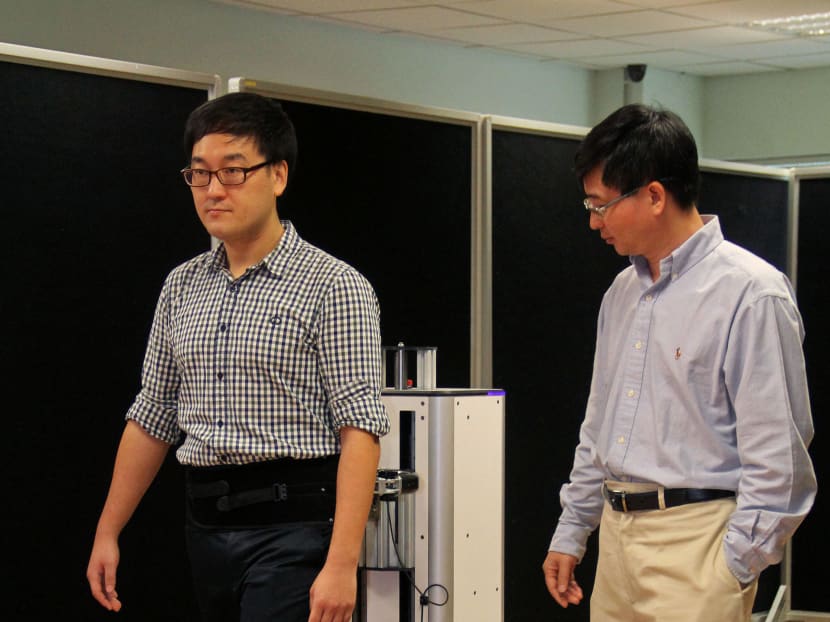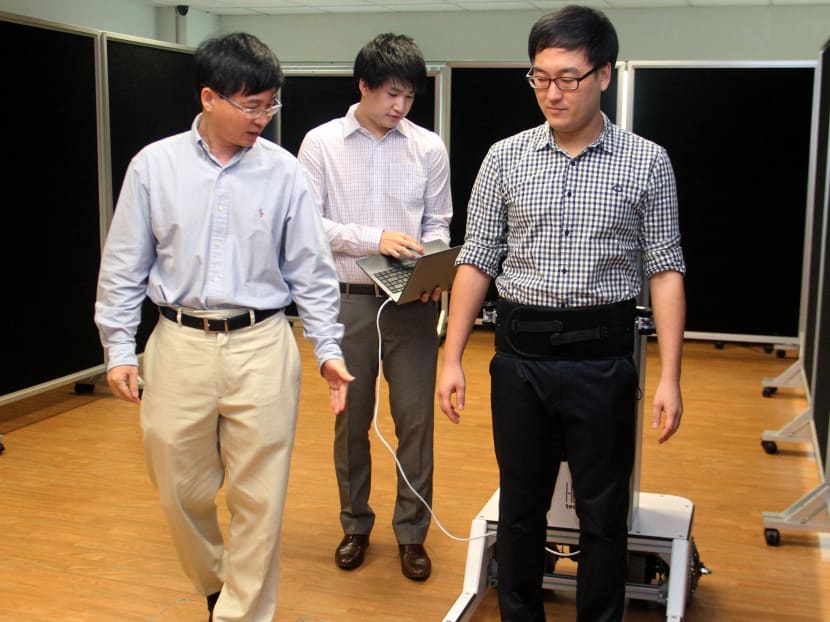New robotic walker to reduce healthcare manpower crunch
SINGAPORE — To reduce the cost of therapy and alleviate the healthcare manpower crunch, a team of National University of Singapore (NUS) researchers has unveiled the prototype of a robotic walker for stroke patients and others with neurological conditions to regain a natural gait.


SINGAPORE — To reduce the cost of therapy and alleviate the healthcare manpower crunch, a team of National University of Singapore (NUS) researchers has unveiled the prototype of a robotic walker for stroke patients and others with neurological conditions to regain a natural gait.
The walker will be available for sale in 2017 and will be sold at a fraction of the cost of physiotherapy equipment currently on the market, the researchers said yesterday.
NUS assistant professor Yu Haoyong, from the Department of Biomedical Engineering, who is leading the team, said the walker will be priced at about S$10,000, which is about one-tenth of the price of physiotherapy equipment here.
Dr Yu pointed out that physiotherapy is labour-intensive — typically, a session would require two or more therapists.
“This robotic walker takes over the physical labour from the therapists — freeing them to focus on motivating the patient and allowing them to take on more patients,” he said.
In a press release, the university said the robotic walker can take over the manual therapy and allow physiotherapists to focus on providing better assessment and training guidance for patients.
The device also reduces the number of physiotherapists needed to conduct each rehabilitation session, increasing productivity and reducing the cost of care, it added.
The walker is about 80cm wide, 150cm tall and weighs about 60kg.
It is capable of supporting a patient’s weight while providing the right amount of force at the pelvis to help the patient walk with a natural gait.
Quantitative data can also be collected during the therapy sessions, so doctors and physiotherapists can monitor the progress of the patient’s rehabilitation, NUS said.
Dr Yu added: “When patients repeat the movements in a natural setting, the routine can be imprinted into their brains, which will gradually learn to correct the damage resulting from their medical conditions.”
He added: “Our vision is for the robotic walker to be installed at outpatient clinics and rehabilitation centres to benefit patients who need therapy sessions.
“There is also a possibility that patients can perform exercises in the comfort of their own homes.”
His team has been working on the walker since January 2011 and hopes to begin clinical trials in July.
It is currently working with homegrown robotics engineering firm Hope Technik, as well as doctors and physiotherapists at the National University Hospital, to fine-tune the product.






